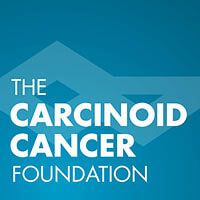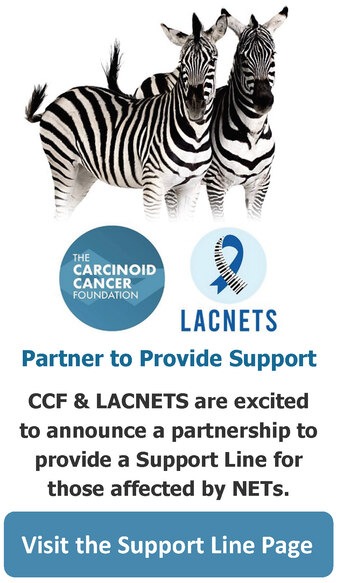Created 1999, Updated 2009
Edited by
Richard R.P. Warner M.D.,
Medical Director of The Carcinoid Cancer Foundation,Inc.
Clinical Professor of Medicine
Mount Sinai School of Medicine, New York, NY
A comprehensive review of neuroendocrine tumors (NETs), carcinoids and pancreatic endocrine tumors (PETs), was written by Robert T. Jensen, M.D. (Cur Opin Oncol 2000; 12:368-373). Dr. Jensen is a well-known and respected national and international authority in this field. He is the former Chief of the Digestive Disease Branch of the National Institute of Diabetes, Digestive and Kidney Diseases of the NIH.
In this review, he points out:
- “Numerous studies demonstrate that a significant proportion of Carcinoid tumors and PETs can pursue a malignant course” and he provides six references for this statement, i.e. not all of these NETs follow a slow, semi-benign course. He notes that although at present it is not possible to predict with certainty what the course will be for any specific tumor, a number of parameters have emerged which appear to be potentially or actually useful as clinical predictors. The most immediately available are: the pathologic and histologic features of the tumor (size, depth of invasion, number and location of metastases, presence or absence of atypism), and proliferation index as determined by Ki 67. Not mentioned but increasingly well recognized is the chromogranin-A blood level.
- Numerous studies have established somatostatin receptor scintigraphy (SRS), commonly known as OctreoScan, as the initial imaging of choice in patients with any type of NET, except insulinoma, to evaluate primary tumor location and tumor extent.
- The overall objective response-rate to chemotherapy is slightly less than one-third of cases for Carcinoid. It is better in metastatic PETs (40-70%) especially with streptozocin/doxorubicin. Since it is not new information though is well known, not mentioned was the observation that atypical carcinoids do respond to Etopocide/Cisplatin much better than do typical tumors. Also not stated is the observation that failure to respond to any one chemotherapy protocol does not predict any specific tumor’s lack of ability to respond to any other chemotherapy regimen.
- Octreotide exerts antigrowth effects in addition to inhibiting symptoms due to excessive hormone production by NETs. These antigrowth effects do not usually regress tumors, but do result in stabilization in 50-80% of metastatic NETs.
Octreotide can induce apoptosis in NETs, whereas alpha-interferon, which also inhibits tumor growth and biochemical production, can induce an increase in bel-2, a factor suppressing NET cell mitosis.
Dr. Jensen noted the apparent enhanced effect of combining octreotide and alpha-interferon in treating NETs However, not included in his review was a report made at the annual American Society of Clinical Oncology meetings in May 2000 which found no increased benefit in this combination treatment over that with either agent alone. More studies and observation will clarify this point, but it is logical that the combination might yield the best results since each of these agents has been shown to have certain different mechanisms of action. - Favorable results are produced by hepatic artery embolus injection and by chemo embolus injection. In the studies he cites, the incidence of benefit and duration were greater with chemo embolus than with embolus alone.
- Briefly mentioned are: experimental radioisotope trials, the role of cryosurgical tumor debulking (not mentioned was Radiofrequency tumor ablation) and liver transplantation.
Still unanswered is the question of timing – when and how to first treat any given individual case once curative resection of the primary tumor is no longer possible or metastases has occurred.
We interpret the points made in this review as favoring a more proactive attitude in managing these tumors rather than perpetuating the traditional, usually widespread, conservative “wait and see” approach.
Reference:
Carcinoid and pancreatic endocrine tumors: recent advances in molecular pathogenesis, localization, and treatment.
Curr Opin Oncol. 2000 Jul;12(4):368-77.
[MEDLINE record in process]
PMID: 10888424; UI: 20344348 –>


